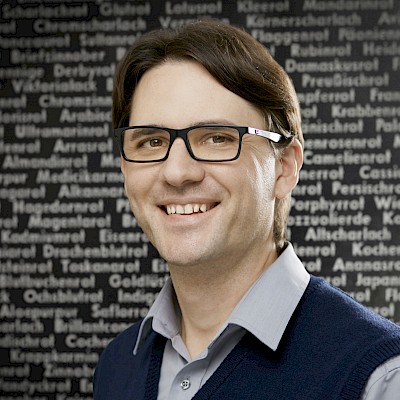Studied Classical Archaeology, Ancient History and Cultural Anthropology at the Universities of Cologne, Bonn and Turin and took the degree M.A. from the Cologne University in 2004. From 2003 to 2006 he completed the supplementary degree course Papyrology, Epigraphy and Numismatics. In 2006 he held DAAD-Scholarship for Doctoral Students at the German Archaeological Institute, Rome. 2009 he received his Ph.D at the Department of Classical Archaeology, University of Cologne (awarded with the prize of the Offermann-Hergarten-Foundation in 2013). 2009 he substituted the Academic Assistant at the Archaeological Institute, University of Cologne. 2009 to 2010 he held a Travelling Fellowship of the German Archaeological Institute. 2010–2011 he was Research associate at the deanship of the faculty of philosophy and »Morphomata« International Center for Advanced Studies, University of Cologne«. Since 2011 Lang helds a position as research fellow (a position equivalent to assistant professor) at the University of Leipzig, Classical Archaeology and Museum of Antiquities.

Jörn Lang
Vita
Fields of Research
Ancient housing; Roman minor arts especially glyptics; methods and cultural history of archaeology; antiquarianism; reception of antiquity; relationshsip of figure and ornament in ancient art
Project outline
Roman iconic practice as traces of everyday life. Contrast and complementarity of female portraits between individuality and exemplum.
Publications (Selection)
1) Mit Wissen geschmückt? Zur bildlichen Rezeption griechischer Dichter und Denker in der römischen Lebenswelt, Monumenta Artis Romanae XXXIX (Wiesbaden 2012)
2) Literatur der Archäologie: Materialität und Rhetorik im 18. und 19. Jahrhundert (München 2012) (zus. mit J. Broch)
3) Tiefenwärts. Archäologische Imaginationen von Dichtern (Mainz 2013) (zus. mit E. Kocziszky)
4) Edle Steine. Lehrreiche Schätze einer Bürgerstadt. Katalog zur Sonderausstellung 02.05.–02.08.2015, Antikenmuseum der Universität Leipzig (Leipzig 2015)
5) Images worn and transcribed. Roman gems as reflections of iconographic and cultural tradition(s), EIDOLA International Journal of Classical Art History 13, 2016, 47–62
6) Combinazioni di motivi e simboli: Considerazioni sul ‘narrare’ nella glittica romana, EIDOLA International Journal of Classical Art History 15, 2018, 57–72
7) Wenn Wissen Schönes schafft: Das Verhältnis von antiquarischer Gelehrsamkeit und ›Schönem Dekor‹ an Beispielen aus dem Gartenreich DessauWörlitz, in: D. Boschung (Hrsg.), Archäologie als Kunst. Archäologische Objekte und Verfahren in der bildenden Kunst des 18. Jahrhunderts und der Gegenwart (München 2015) 119–154
8) Ornament versus Figur. Zur Lesbarkeit von Gestaltungselementen italischer Sigillaten, in: M. Flecker (Hrsg.), Neue Bilderwelten. Zur Ikonographie und Hermeneutik italischer Sigillata (Rahden/ Westf. 2017) 161–173
9) La cultura abitativa nella Solunto ellenistico-romana. Ipotesi ricostruttive sulla base degli elementi di arredo, in: O. Belvedere – J. Bergemann (Hrsg.), Das Römische Sizilien/ Sicilia Romana (Palermo 2018) 231–248
10) Der Hercules mingens im fürstlichen Schlafzimmer – Zur Deutungskraft des Mythos in der Perspektive Leopolds III. Friedrich Franz von Anhalt-Dessau, Münchner Jahrbuch der Bildenden Kunst. Dritte Folge LXVII, 2017, 149–184 (zus. mit H.-U. Cain)